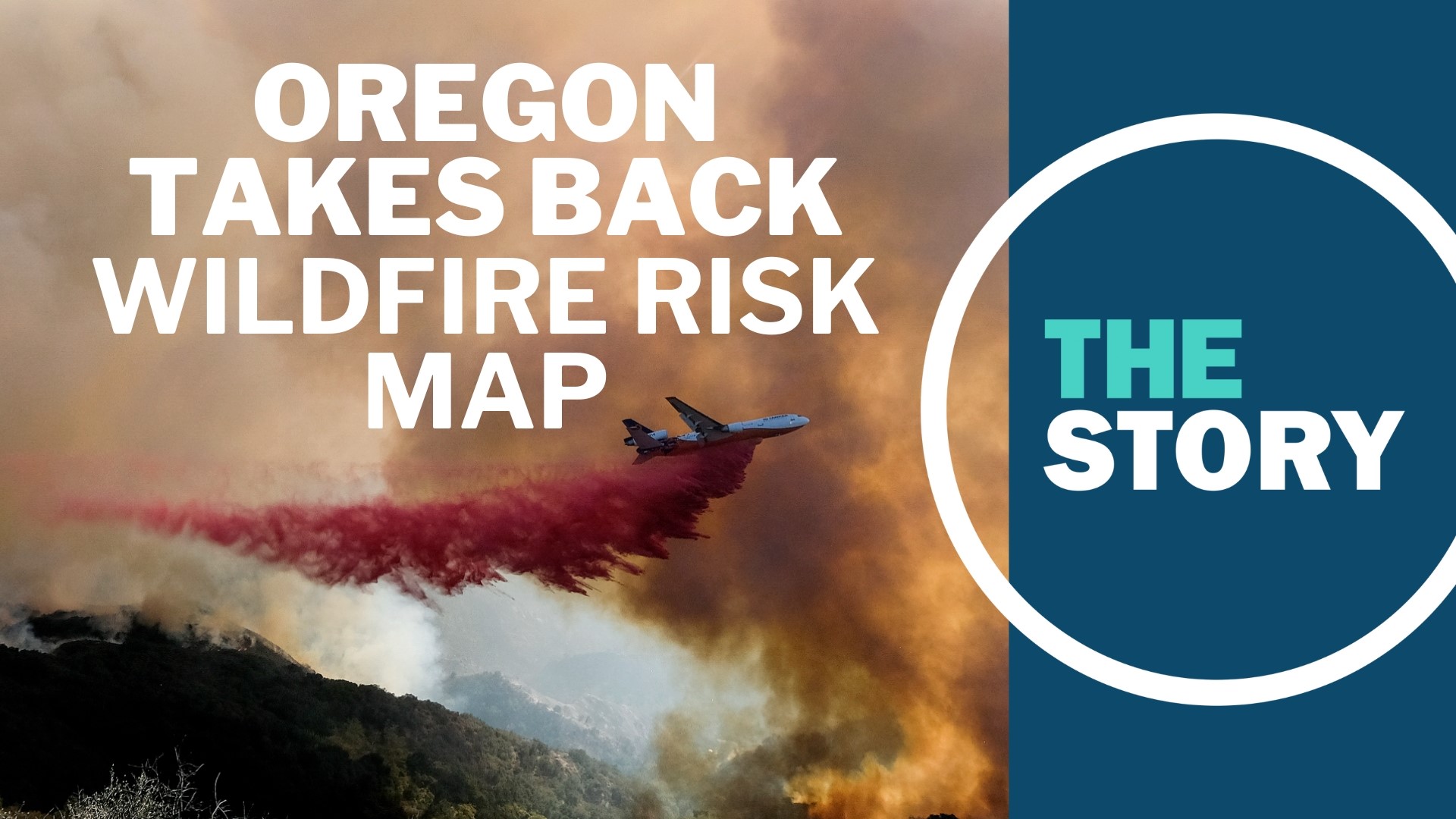SALEM, Ore. — After getting feedback from thousands of Oregonians, state officials have withdrawn a map that identified the approximate wildfire risk for every corner of Oregon.
The process sprang from a law passed in 2021, intended to address the impacts of wildfires in Oregon. Part of that law led to this wildfire risk assessment map, which was created by the Oregon Department of Forestry.
The map was meant to inform people whether their homes are at "high" or "extreme" risk from wildfires. Just as significantly, the map was supposed to let property owners know if they needed to take additional steps to protect their homes, which would have been a requirement by next spring.
Those additional steps included things like trimming trees or cutting back vegetation on a property to create what's known as defensible space.
After the map was originally published, many homeowners — particularly in rural parts of Oregon — reported that their insurance rates suddenly doubled or even tripled. Some said that their insurers dropped them entirely.
Moreover, critics said that the map was inconsistent and the risk designations were not entirely accurate.
The Story reported on the deluge of complaints on Wednesday this week. On Thursday, seemingly swayed by some very heated feedback, Oregon State Forester Cal Mukumoto issued a statement announcing that the map would be withdrawn and reworked.
"In response to input received since posting, we have decided to remove the current iteration of the wildfire risk map from the Oregon Explorer and withdraw the notices sent," Mukumoto said. "We will immediately begin working with Oregon State University on some refinements to improve the accuracy of risk classification assignments based on what we’ve heard from property owners thus far."
ODF said that it received 750 appeals from Oregon residents within the last several weeks alone. Meanwhile, some Republican lawmakers were lobbying state leadership to pause or stop the entire process.
KGW's Ashley Korslien spoke on Thursday with Derek Gasperini, public affairs officer with ODF, about the decision to pump the brakes on the wildfire risk map and some potential next steps.
"I don't think that we anticipated the amount of response about the downstream implications," Gasperini admitted. "So there are some potential unintended consequences that we hadn't anticipated in drawing the lines on the map and determining how risk was going to be classified based on the direction of the legislation ... but we certainly understand, you know, citizens' concerns and want to make sure that those are actively represented in the process moving forward."
Regardless, Gasperini and ODF stood firm beyond the need for a map like this, with wildfires and the need for wildfire protection becoming increasingly prevalent throughout many areas of the state.
ODF is going right back to the drawing board in order to revisit the map, and Gasperini said they anticipate having a new version by the end of the year — one that may be all too familiar.
"We just ask folks for patience while we make some technical revisions, but I also just want to manage expectations a little bit," Gasperini said. "While we'll have some minor adjustments, the map is not gonna look drastically different than it looks currently — there are still fuels on the ground. There are still climate, weather and topography issues that cause problematic fire behavior in certain areas of Oregon. And those are the areas that we're trying to highlight to be able to show the elevated risk for that impact of wildfire."
But it won't be 'the new map, same as the old map' if state Rep. Kim Wallan, a Republican from Medford, has anything to say about it. She hopes to get the 2021 law that established this process amended in the next legislative session.
"This is the main reason I opposed the bill ... so it means to me that the method was flawed, fatally flawed," Wallan said. "I hope that this is going to cause a lot more public comment, a lot more public engagement. All of this is public policy. The rulemaking meetings are open to the public and public comment can be made. So I do hope that people engage. And I hope that through that process and hearing from constituents ... that there will be enough impetus that the policy will be changed when we get back into the session in January. That's what I hope. I hope that we change the policy altogether."
The eventual requirement for defensible space isn't the only regulation attached to the new state law. Wallan said that there are also restriction on starting new construction in some areas of the state, which could seriously hurt the need for more affordable housing in those areas.
Meanwhile, we still don't know exactly what the process of going back to the drawing board for "minor adjustments" will cost taxpayers.

